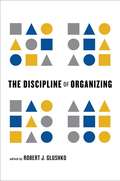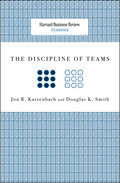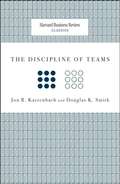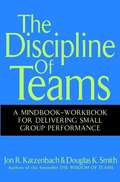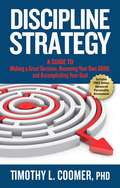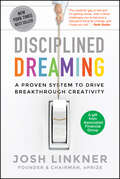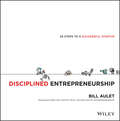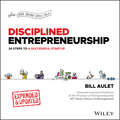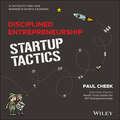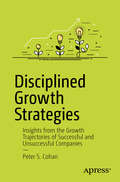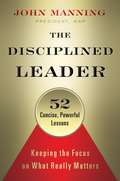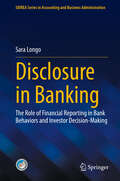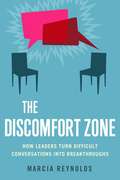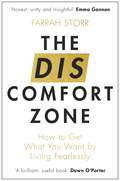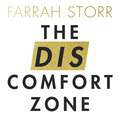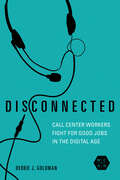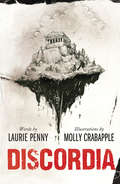- Table View
- List View
The Discipline of Organizing
by Robert J. Glushko et alAbstract: We organize things, we organize information, we organize information about things, and we organize information about information. But even though "organizing" is a fundamental and ubiquitous challenge, when we compare these activities their contrasts are more apparent than their commonalities. We propose to unify many perspectives about organizing with the concept of an Organizing System, defined as an intentionally arranged collection of resources and the interactions they support. Every Organizing System involves a collection of resources, a choice of properties or principles used to describe and arrange resources, and ways of supporting interactions with resources. By comparing and contrasting how these activities take place in different contexts and domains, we can identify patterns of organizing. We can create a discipline of organizing in a disciplined way.
The Discipline of Teams
by Jon R. Katzenbach Douglas K. SmithInThe Discipline of Teams, Jon Katzenbach and Douglas Smith explore the often counter-intuitive features that make up high-performing teams-such as selecting team members for skill, not compatibility-and explain how managers can set specific goals to foster team development. The result is improved productivity and teams that can be counted on to deliver more than just the sum of their parts. Since 1922,Harvard Business Review has been a leading source of breakthrough ideas in management practice. The Harvard Business Review Classics series now offers you the opportunity to make these seminal pieces a part of your permanent management library. Each highly readable volume contains a groundbreaking idea that continues to shape best practices and inspire countless managers around the world.
The Discipline of Teams: A Mindbook-workbook For Delivering Small Group Performance (Harvard Business Review Classics Ser.)
by Jon R. Katzenbach Douglas K. SmithBestOfHBR 1993
Discipline Strategy
by Timothy Coomer PhDChange begins with a decision. To move beyond that decision to positive life change requires discipline. In Discipline Strategy, Dr. Coomer translates the word DISCIPLINE into an acronym for a ten-step life change process.Don&’t be uncertain or confused for another day. You can become the hero of your own life&’s story. The DISCIPLINE STRATEGY® approach works for both business and personal challenges and will guide you from the point of decision to accomplishment. Dr. Coomer is a serial entrepreneur and personality researcher with a deep understanding of how personality impacts performance. To enhance your ability to implement the DISCIPLINE STRATEGY® process, this book includes a free comprehensive personality assessment. Many of today&’s self-help books offer a prescription for change but fail to provide an answer to your specific challenges. A better approach is to learn a process that supports genuine change and allows you to become your own customized expert. In this way, you&’ll learn to: • [DECIDE] Make sound decisions. • [INVESTIGATE] Investigate relevant topics. • [SORT] Sort through information with a critical eye. • [CONCEIVE] Conceive a detailed plan. • [IMPLEMENT] Implement the plan. • [PERSEVERE] Move forward with passion and perseverance. • [LOOP] Use a feedback loop to evaluate your progress and make adjustments where needed. • [INTENSIFY] Intensify your efforts where appropriate. • [NOTICE] Take notice of what you have accomplished. • [ENJOY] Enjoy the fruits of your labors using the positive psychology concept of PERMA. This is your roadmap for change, the ultimate guide to making a great decision, becoming your own guru, and accomplishing your goal.
Disciplined Dreaming
by Josh LinknerA 5-part process that will transform your organization -- or your career -- into a non-stop creativity juggernautWe live in an era when business cycles are measured in months, not years. The only way to sustain long term innovation and growth is through creativity-at all levels of an organization. Disciplined Dreaming shows you how to create profitable new ideas, empower all your employees to be creative, and sustain your competitive advantage over the long term. Linkner distills his years of experience in business and jazz -- as well as hundreds of interviews with CEOs, entrepreneurs, and artists -- into a 5-step process that will make creativity easy for you and your organization. The methodology is simple, backed by proven results.Empowers individuals, teams, and organizations to meet creative challenges posed by the marketplaceTurns the mystery of creativity into a simple-to-use processShows how creativity can be used for everything from innovative, game-shifting breakthroughs to incremental advances and daily improvements to business processesOffers dozens of practical exercises, thought-starters, workouts to grow "creative muscles," and case studiesDisciplined Dreaming shows even the stuffiest corporate bureaucracies how to cultivate creativity in order to become more competitive in today's shifting marketplace.* #4 New York Times Best Seller (Advice, How-To and Miscellaneous)* #8 New York Times Best Seller (Hardcover Business)* #2 Wall Street Journal Best Seller (Hardcover Business)* #9 Wall Street Journal Best Seller (Hardcover Nonfiction)* #9 Washington Post Best Seller (Hardcover Nonfiction)* #1 USA Today Best Seller (Money)* #10 Entertainment Weekly Best Seller (Hardcover Nonfiction)* #10 Publishers Weekly Bestseller (Hardcover Nonfiction)
Disciplined Entrepreneurship
by Bill Aulet24 Steps to Success!Disciplined Entrepreneurship will change the way you think about starting a company. Many believe that entrepreneurship cannot be taught, but great entrepreneurs aren't born with something special - they simply make great products. This book will show you how to create a successful startup through developing an innovative product. It breaks down the necessary processes into an integrated, comprehensive, and proven 24-step framework that any industrious person can learn and apply. You will learn:Why the "F" word - focus - is crucial to a startup's successCommon obstacles that entrepreneurs face - and how to overcome themHow to use innovation to stand out in the crowd - it's not just about technologyWhether you're a first-time or repeat entrepreneur, Disciplined Entrepreneurship gives you the tools you need to improve your odds of making a product people want.Author Bill Aulet is the managing director of the Martin Trust Center for MIT Entrepreneurship as well as a senior lecturer at the MIT Sloan School of Management.For more please visit http://disciplinedentrepreneurship.com/
Disciplined Entrepreneurship Expanded & Updated: 24 Steps to a Successful Startup
by Bill AuletAn expanded & updated version of the award winning & bestselling one-stop entrepreneurial book used by hundreds of schools globally that has helped create or make better hundreds of thousands of entrepreneurs Disciplined Entrepreneurship Expanded and Updated starts by combining the timeless and insightful principles of Disciplined Entrepreneurship with the practical tools found in the Disciplined Entrepreneurship Workbook into a single, comprehensive package. The book also has been updated with recent developments in the field and examples as well as a robust new library of additional resources. Author, entrepreneur, professor, and Managing Director of the Martin Trust Center for MIT Entrepreneurship, Bill Aulet systematically walks readers through exactly how to create a successful startup. This book presents a detailed, sequential—but not linear—integrated and proven 24-step framework that any entrepreneur can apply immediately to improve their chances of entrepreneurial success. Readers will also find: The number-one process reason that new ventures fail Entrepreneurship is not an art, but rather a craft that can be learned How the best idea or product is no assurance at all that you will win—there is much more Perfect for aspiring founders and entrepreneurs within existing organizations, Disciplined Entrepreneurship Expanded & Updated is also an invaluable resource for anyone who has already begun their entrepreneurial journey and needs practical, hands-on tools to help them take their business to the next level.
Disciplined Entrepreneurship Startup Tactics: 15 Tactics to Turn Your Business Plan into a Business
by Paul CheekA hands-on, practical roadmap to get from great idea to successful company In Disciplined Entrepreneurship: Startup Tactics, renowned entrepreneur and Executive Director of the Martin Trust Center for MIT Entrepreneurship Paul Cheek delivers an actionable field guide to transforming your one great idea into a functional, funded, and staffed startup. Building on the ideas presented in the bestselling Disciplined Entrepreneurship, the author delivers a startlingly complete and comprehensive set of solutions you can implement immediately to advance your company to its next stage of growth. This is not a theoretical book. You’ll find ground-level, down-and-dirty entrepreneurial tactics—like how to conduct advanced primary market research, market and sell to your first customers, and take a scrappy approach to building your first products—that keep your firm growing. These tactics maximize your impact with limited resources. You’ll also discover: Effective marketing tactics specific to early startups that go beyond cookie-cutter digital MarTech solutions Tactics for designing and testing your product concepts yourself before investing limited resources in developing a fully functional product Methods for equity distribution that minimize conflict and maximize investor return An invaluable resource for founders and entrepreneurs, Disciplined Entrepreneurship: Startup Tactics will also benefit any professional working at an early-stage startup or launching new products looking for concrete solutions to the most common and difficult problems faced by young companies and the people who work in them.
Disciplined Entrepreneurship Workbook
by Bill AuletThe essential companion to the book that revolutionized entrepreneurship Disciplined Entrepreneurship Workbook provides a practical manual for working the 24-step framework presented in Disciplined Entrepreneurship. Unlocking key lessons and breaking down the steps, this book helps you delve deeper into the framework to get your business up and running with a greater chance for success. You'll find the tools you need to sharpen your instinct, engage your creativity, work through hardship, and give the people what they want—even if they don't yet know that they want it. Real-world examples illustrate the framework in action, and case studies highlight critical points that can make or break you when your goal is on the line. Exercises and assessments help you nail down your strengths, while pointing out areas that could benefit from reinforcement—because when it comes to your business, "good enough" isn't good enough—better is always better. Disciplined Entrepreneurship transformed the way that professionals think about starting a company, and this book helps you dig into the proven framework to make your business dreams a reality. Delve deeper into the 24 steps to success Innovate, persevere, and create the product people want Internalize lessons learned from real-world entrepreneurs Test your understanding with exercises and case studies The book also includes new material on topics the author has found to be extremely useful in getting the most value out of the framework including Primary Market Research, Windows of Opportunity and Triggers. The book also introduces the Disciplined Entrepreneurship Canvas to track your progress on this journey. Starting a company is a serious undertaking, with plenty of risk and sacrifice to go around—so why not minimize the risk and make the outcome worth the sacrifice? Author Bill Aulet's 24-step framework is proven to build a successful business; the key is in how well you implement it. Disciplined Entrepreneurship Workbook helps you master the skills, tools, and mindset you need to get on your path to success.
Disciplined Growth Strategies
by Peter S. CohanAccelerate your company's growth in a disciplined fashion. This book provides leaders of large and small companies a proven comprehensive framework to think systematically about growth options and to yield practical strategies that produce faster growth.Drawing insights from case studies of successful and unsuccessful companies, strategy teacher and venture capitalist Peter Cohan models his systematic approach to brainstorming, evaluating, and implementing growth strategies across five dimensions: Customers, Geography, Products, Capabilities, Culture. He examines each of these five growth dimensions in turn, selecting and organizing his cases to compare the growth strategies deployed successfully and unsuccessfully by large and small companies along the given dimension. In each of his five dimensional chapters, the author derives from his case analyses the key principles and processes for creating and achieving faster growth.Professor Cohan draws on a network of hundreds of founders, CEOs, and investors developed through his decades of consulting, authorship of 11 books, and over five years as a Forbes columnist. He shows through many compelling stories how leaders craft effective growth strategies.Business leaders will learn the following lessons from this book:Achieving rapid but sustainable growth is a business leader’s most important responsibility – and leaders must approach this challenge with a mixture of vision, intellectual humility, and a willingness to experiment and learn from failure.The growth challenges facing companies that are currently growing quickly differ from the ones that stagnating or shrinking companies must overcome.Companies can achieve growth along one or more of the dimensions simultaneously – and they often expand geographically to customers in the same segments.Useful insights can emerge from comparing case studies of successful and unsuccessful companies pursuing similar growth strategies.Companies should select a growth strategy based on three factors: the attractiveness of the growth opportunity, the company’s capabilities to provide superior value to customers in the selected market, and the expected return on investment in the growth vector.Companies should select a growth strategy that best fits their capabilities and culture and they must enhance both to adapt to new growth opportunities.Who This Book Is ForThe people in companies who are responsible for growth: chief executive officers, chief marketing officers, chief product officers, heads of business development, product managers, sales people, and human resources managers
The Disciplined Leader
by Katie Roberts John ManningWhat do the best leaders have in common? As president of MAP, John Manning should know. MAP has helped tens of thousands of top executives accelerate their leadership and management performance. Manning says the answer is one word: discipline. But for Manning, discipline has a very specific meaning. All leaders have scores of things they could do. But a disciplined leader is one who identifies and focuses on the Vital Few: the 20 percent of activities that will drive 80 percent of the results. And the results that are most important are those tied to the organization's most precious asset: its people.The Disciplined Leader offers fifty-two succinct lessons to help you home in on your own Vital Few in three critical areas: leading yourself, leading your team, and leading your organization. Each lesson comes with recommended tactics and practical "Take Action!" tips for implementing it, so there are literally hundreds of pieces of must-know, time-tested advice here. The chapters are self-contained, so you can read them in any order and come back to the ones that resonate with you--your own Vital Few! This is a hands-on, nuts-and-bolts guide to leadership practice that's built to inspire action, drive change, and achieve results.
The Disciplined Mind: Harnessing Its Power for Success
by Howard GardnerThis chapter shows how the disciplined mind, with its well-informed and distinct way of viewing the world, is poised for professional success .
Disclosure and Concealment in Consumer Insurance Contracts
by Julie-Ann TarrThis book provides an in-depth examination of the theoretical,legal, social and economic foundations to disclosure and concealment of information in relation to the formation of consumer insurance contracts. A comparative treatment of this issue is undertaken with particular attention given to the judicial and legislative approaches adopted in the United Kingdom, the United States of America, Australia and New Zealand. It will be relevant to those researching and studying insurance law, all legal practitioners involved with the formation of consumer insurance contracts and non-legal practitioners working within the field of insurance.
Disclosure in Banking: The Role of Financial Reporting in Bank Behaviors and Investor Decision-Making (SIDREA Series in Accounting and Business Administration)
by Sara LongoDisclosure represents an evergreen topic in banking since it allows breaking down the opacity of the so-called “black box” banks. The recent failures of Silicon Valley Bank and Credit Suisse in March 2023 have reignited discussions about the role played by banking disclosure and its link to transparency, financial stability, and competition. Given these premises, this book comprehensively explains how banking disclosure has evolved in the last decades, shaping banks’ behaviors and mainly investors' decision-making. The book provides an in-depth review of the field, highlighting theories and empirical studies about banking disclosure grounded on regulatory mandates and voluntary initiatives mitigating agency conflicts and addressing information asymmetries. Then, this book discusses banks' need to enhance their disclosure practices to comply with stress tests and contribute to sustainable development, particularly in light of climate change risk. To this end, an empirical investigation uncovers banks scrutinized by regulators and supervisors are more inclined to engage in green lending and prioritize borrowers’ ESG disclosures, thus promoting a more sustainable economy. Lastly, this book presents the state of the art about the link between banking disclosure and sustainability, suggesting potential avenues for future research.
The Discomfort Zone
by Marcia ReynoldsYou want people to stretch their limits, but your conversations meant to help them often fall flat or backfire, creating more resistance than growth. Top leadership coach Marcia Reynolds offers a model for using the Discomfort Zone--the moment when the mind is most open to learning--to prompt people to think through problems, see situations more strategically, and transcend their limitations. Drawing on recent discoveries in the neuroscience of learning, Reynolds shows how to ask the kinds of questions that short-circuit the brain's defense mechanisms and habitual thought patterns. Then, instead of being told, people see for themselves the insightful and often profound solutions to what is stopping their progress. The exercises and case studies will help you use discomfort in your conversations to create lasting changes and an enlivened workforce.
The Discomfort Zone: How to Get What You Want by Living Fearlessly
by Farrah Storr'Honest, witty and insightful' Emma Gannon'A brilliant, useful book' Dawn O'Porter'Farrah has written a book about the things no one wants to talk about: failure, discomfort, and how to deal with both' Sophia Amoruso, author of #GirlbossWhile it is human nature to shy away from things that are outside of our comfort zone, it is only by spending time in our discomfort zone that we can grow, and improve, and realise our full potential. Whether it's putting yourself forward for a new challenge, asking for difficult feedback, nailing a presentation or getting a dream job, in this book Farrah Storr shows how you have to push through what she calls "brief moments of discomfort" in order to get to where you need to be.Farrah describes these brief moments of discomfort as "like HIIT training for your life" - and shows how the more you force yourself into them, the easier it will get. This book is full of advice, practical exercises and examples both from Farrah's own life and career and from all sorts of other successful people, from athletes to entrepreneurs.By adopting the brief moments of discomfort, or BMD method, you will soon understand that nothing in life is an insurmountable challenge, only a series of small, uncomfortable tests that can easily be overcome. Once you have used Farrah's techniques to transform your fear into bite-size, manageable pieces, you'll be able to take on anything. In fact, in time, you'll even begin to enjoy these moments. When you explore your discomfort zone, you'll find that anything is possible.
The Discomfort Zone: How to Get What You Want by Living Fearlessly
by Farrah Storr'Honest, witty and insightful' Emma Gannon'A brilliant, useful book' Dawn O'Porter'Farrah has written a book about the things no one wants to talk about: failure, discomfort, and how to deal with both' Sophia Amoruso, author of #GirlbossWhen you explore your discomfort zone, you'll find that anything is possible.While it is human nature to shy away from things that are outside of our comfort zone, it is only by spending time in our discomfort zone that we can grow, and improve, and realise our full potential. Whether it's putting yourself forward for a new challenge, asking for difficult feedback, nailing a presentation or getting a dream job, in this book Farrah Storr shows how you have to push through what she calls "brief moments of discomfort" in order to get to where you need to be.Farrah describes these brief moments of discomfort as "like HIIT training for your life" - and shows how the more you force yourself into them, the easier it will get. This book is full of advice, practical exercises and examples both from Farrah's own life and career and from all sorts of other successful people, from athletes to entrepreneurs.By adopting the brief moments of discomfort, or BMD method, you will soon understand that nothing in life is an insurmountable challenge, only a series of small, uncomfortable tests that can easily be overcome. Once you have used Farrah's techniques to transform your fear into bite-size, manageable pieces, you'll be able to take on anything. In fact, in time, you'll even begin to enjoy these moments.
Disconnected: Call Center Workers Fight for Good Jobs in the Digital Age (Working Class in American History)
by Debbie J. GoldmanCall center employees once blended skill and emotional intelligence to solve customer problems while the workplace itself encouraged camaraderie and job satisfaction. Ten years after telecom industry deregulation, management had isolated the largely female workforce in cubicles, imposed quotas to sell products, and installed surveillance systems that tracked every call and keystroke. Debbie J. Goldman explores how call center employees and their union fought for good, humane jobs in the face of degraded working conditions and lowered wages. As the workforce coalesced to resist the changes, it demanded the Communications Workers of America (CWA) fight for safe and secure good-paying jobs. But trends in technology, capitalism, and corporate governance--combined with the decline of unions--narrowed the negotiating options for workers. Goldman describes how the actions of workers, management, and policymakers shaped the social impact of the new digital technologies and gave new form to the telecommunications industry in a time of momentous change. Perceptive and nuanced, Disconnected tells an overlooked story of service workers in a time of change.
Discontinuities in Ecosystems and Other Complex Systems (Complexity in Ecological Systems)
by Craig R. Allen C. S. Holling Eds.Following the publication of C. S. Holling's seminal work on the relationship between animal body mass patterns and scale-specific landscape structure, ecologists began to explore the theoretical and applied consequences of discontinuities in ecosystems and other complex systems. Are ecosystems and their components continuously distributed and do they adhere to scaling laws, or are they discontinuous and more complex than early models would have us believe? The resulting propositions over the structure of complex systems sparked an ongoing debate regarding the mechanisms generating discontinuities and the statistical methods used for their detection.This volume takes the view that ecosystems and other complex systems are inherently discontinuous and that such fields as ecology, economics, and urban studies greatly benefit from this paradigm shift. Contributors present evidence of the ubiquity of discontinuous distributions in ecological and social systems and how their analysis provides insight into complex phenomena. The book is divided into three sections. The first focuses on background material and contrasting views concerning the discontinuous organization of complex systems. The second discusses discontinuous patterns detected in a number of different systems and methods for detecting them, and the third touches on the potential significance of discontinuities in complex systems. Science is still dominated by a focus on power laws, but the contributors to this volume are convinced power laws often mask the interesting dynamics of systems and that those dynamics are best revealed by investigating deviations from assumed power law distributions.In 2008, a grand conference on resilience was held in Stockholm, hosting 600 participants from around the world. There are now three big centers established with resilience, the most recent one being the Stockholm Resilience Center, with others in Australia (an international coral reef center), Arizona State University's new sustainability center focusing on anthropology, and Canada's emerging social sciences and resilience center. Activity continues to flourish in Alaska, South Africa, and the Untied Kingdom, and a new center is forming in Uruguay.
Discontinuities in Ecosystems and Other Complex Systems
by C. S. Holling Craig R. AllenA Major Contribution to Theoretical Ecology
Discordia: Six Nights in Crisis Athens
by Laurie Penny Molly CrabappleDISCORDIA is a story of courage and collapse in a country and a culture struggling to map out its future. A short ebook combining a 24,000-word essay with 36 detailed drawings, DISCORDIA is a feminist-art-gonzo-journalism project conceived at Occupy Wall Street and created in the summer of debt and doubt after the euphoric street protests of 2011-2012.In July 2012, artist Molly Crabapple and journalist Laurie Penny travelled to Greece. There, they drew and interviewed anarchists, autonomists, striking workers and ordinary people caught up in the Euro crisis. DISCORDIA is the result. In an impassioned climate where ‘objective’ journalism is impossible, Penny and Crabapple offer a snapshot of a nation in the grip of a very modern crisis where young and old see little reason to go on, the left is scattered and the far right is assuming greater power and influence. Along the way they drink far too much coffee, become hypnotised by street art, and somehow manage not to get arrested or mugged.DISCORDIA is an experiment in form, using the illustrated ebook format to its fullest extent to tell a story unique to the wordlength and digital platform involved. Crabapple's intricate, Victorian-inspired ink drawings lend a timeless quality to what is a conscious foray into a new kind of journalism - inspired by the New Journalism of the 1970s, in particular the art-journalism collaborations of Hunter Thompson and Ralph Steadman, but reworking that tradition for a 21st century world where young women must still fight at every turn to be taken seriously.DISCORDIA weaves together the personal and political, picking out those elements of the Greek crisis that are recognisable across the West to a generation struggling to articulate its purpose in a world of spiralling unemployment, democratic collapse and civil unrest. The solutions to the failure of modern neoliberal statecraft are very different to the 'tune in, turn on, drop out' ethos of the sixties: these days the drugs are worse and rock 'n' roll can't save us. The future is a question in search of an answer.Available only digitally, with a foreword by economic journalist and writer Paul Mason, this beautifully illustrated ebook is part-polemic, part-travelogue and part-paean to the birthplace of civilization brought to its knees. Part of the Brain Shot series, the pre-eminent source of short form digital non-fiction.'This is the Next Big Thing in journalism: digital, visual, intelligent, heartfelt, post-political, female, alarming, and engaging. It's both an honest chronicle of one corner of the collapse of a civilization, and an inspiring demonstration of the kinds of thinking, craft, and collaboration that might yet get us through.' Douglas Rushkoff, author of LIFE INC.
Discount and Hawkins Exercise: Confidential Instructions for Landlord
by Michael A. WheelerExercise
Discount and Hawkins Exercise: Confidential Instructions for Tenant
by Michael A. WheelerThis simulation involves a negotiation between a real estate developer and a prospective anchor tenant in a proposed shopping center. Students are assigned roles, given confidential information, and asked to try to break the impasse over the "use, assignment, and subletting" clause. Debriefing the results in class should illustrate the possibility of generating joint gains through interest-based negotiation—and the obstacles to such a process. Technical knowledge of real estate issues is not assumed.
